

William Stopford
Ford Mustang recalled
54 Minutes Ago
Our launch review of the updated Kodiaq range included something left-field – driving the new petrol-powered RS from Sydney to Melbourne.
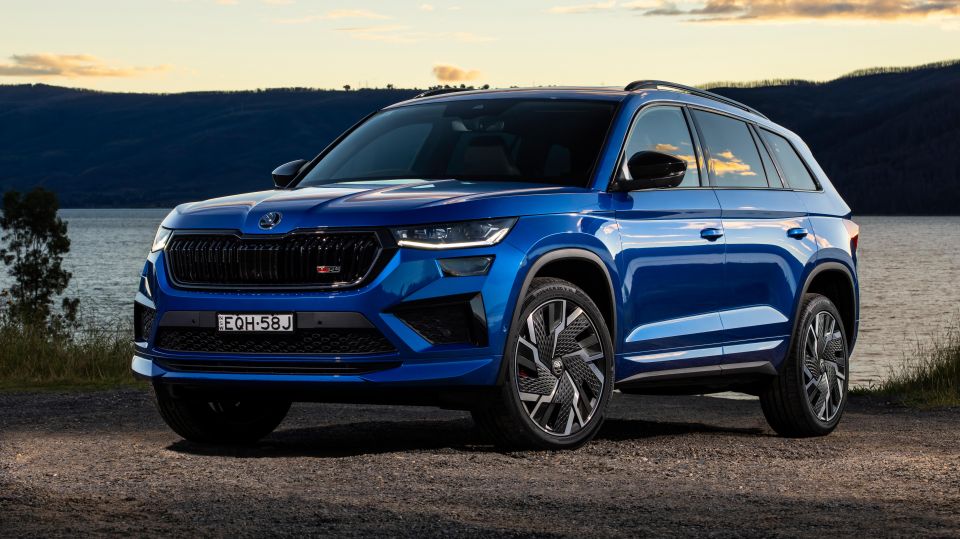


Quickly see how this car stacks up against its competition. Select any benchmark to see more details.
Where expert car reviews meet expert car buying – CarExpert gives you trusted advice, personalised service and real savings on your next new car.
The Skoda Kodiaq seven-seat SUV has just received its mid-life upgrade, headlined by a new petrol-powered RS range-topper in place of the outgoing diesel.
While far from revolutionary, the MY22 updates modernise the Czech brand’s rival to the Hyundai Santa Fe, Kia Sorento, Mazda CX-8 and CX-9, Toyota Kluger, and just-facelifted Volkswagen Tiguan Allspace – among a multitude of other family friendly offerings.
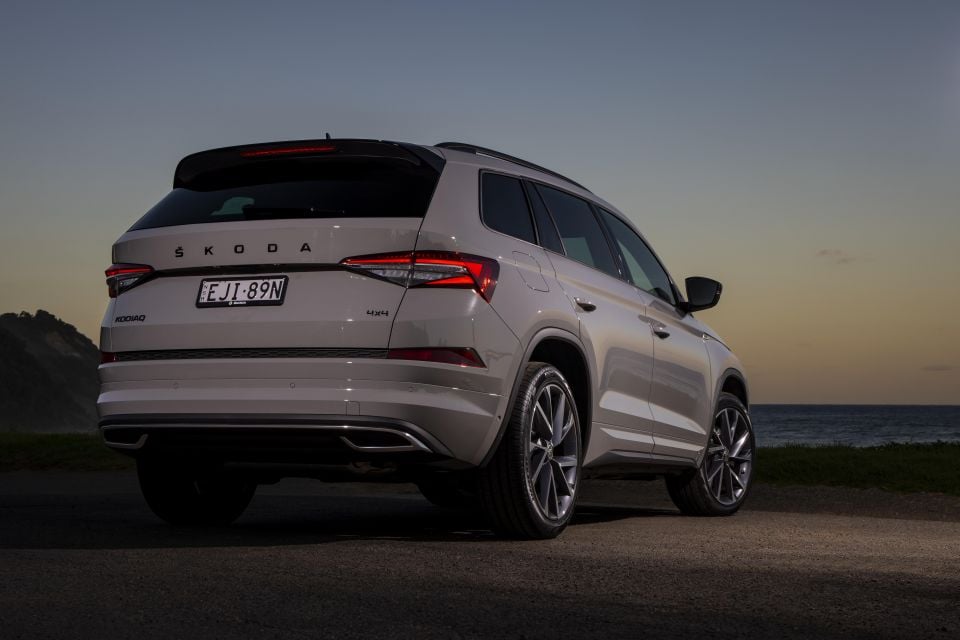
Design tweaks comprise a new grille, bonnet and bumper design up front, and new Matrix LED headlights as an option. There are also different wheel designs (on some variants), plus a new rear bumper and LED combination tail lights with scrolling indicators.
Inside there are new seats, a new-design steering wheel, digital instruments with better graphics than before, ambient cabin lighting extended to the footwells, new trim options, dashtop stitch-work, and on the tech front wireless phone mirroring and charging.
All told Skoda has sold around 7500 Kodiaqs in Australia since 2017, and at times it has been the brand’s top-selling model – although not in 2020 or 2021. Do these running changes make a good car better?
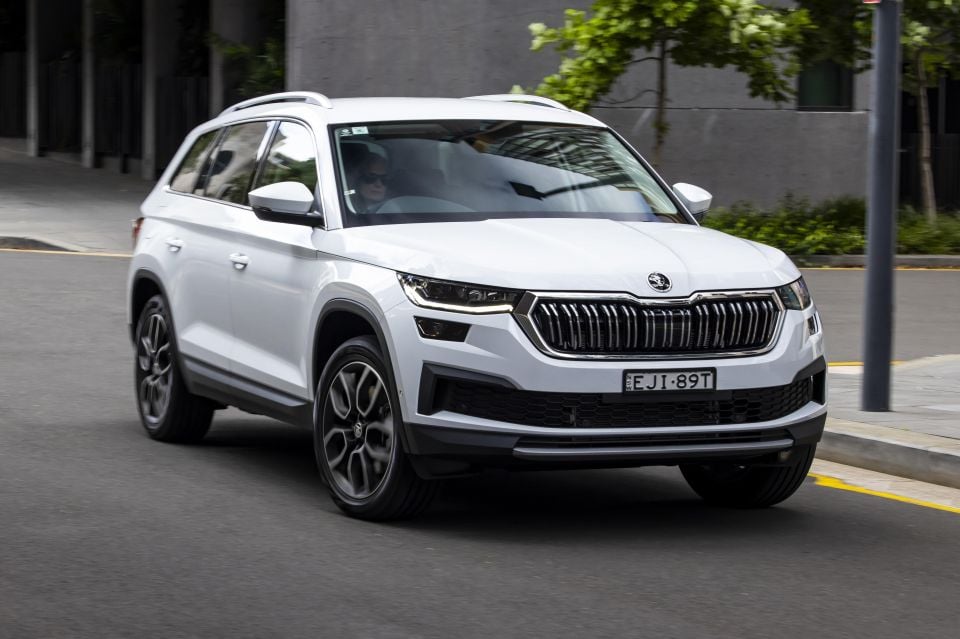
Skoda offers national drive-away pricing, which is something we wish all manufacturers would do. Every state and territory has different tax structures, but Skoda works around this.
There are three specification grades, which can be had with various extra-cost options – something that does reduce the simplicity of the line-up, but which also keeps costs down.
2022 Skoda Kodiaq pricing
All prices are drive-away
To put this into context the drive-away price of the Hyundai Santa Fe range in Victoria goes from around $50,000 to $71,500, the non-hybrid Kia Sorento range drive-away sits between $50,790 and $68,990, and the Mazda CX-8 line-up is priced between $44,500 and $76,400 on the road.
Unlike this trio, the Skoda Kodiaq range is petrol and all-wheel drive only.
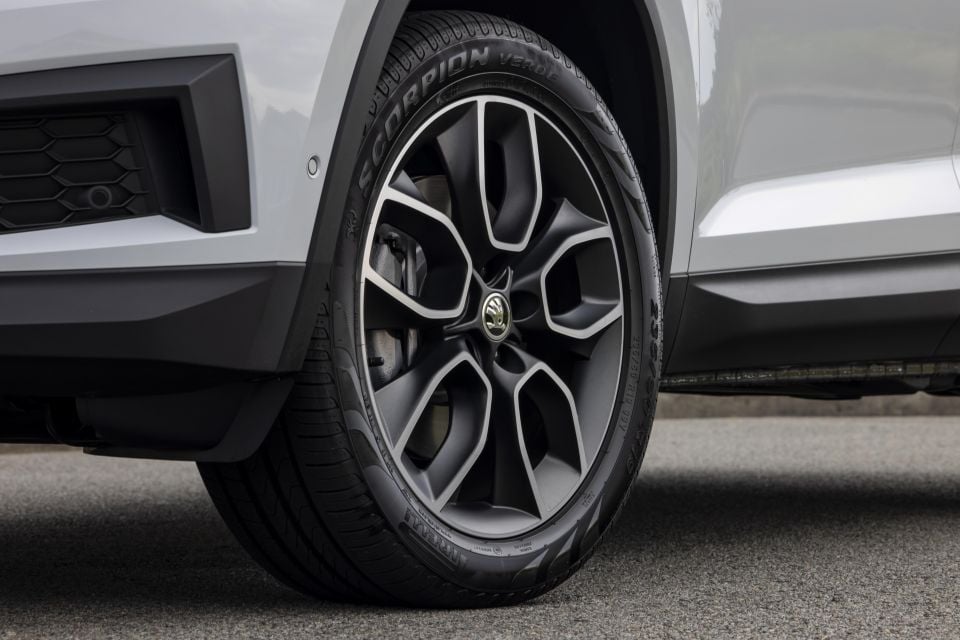
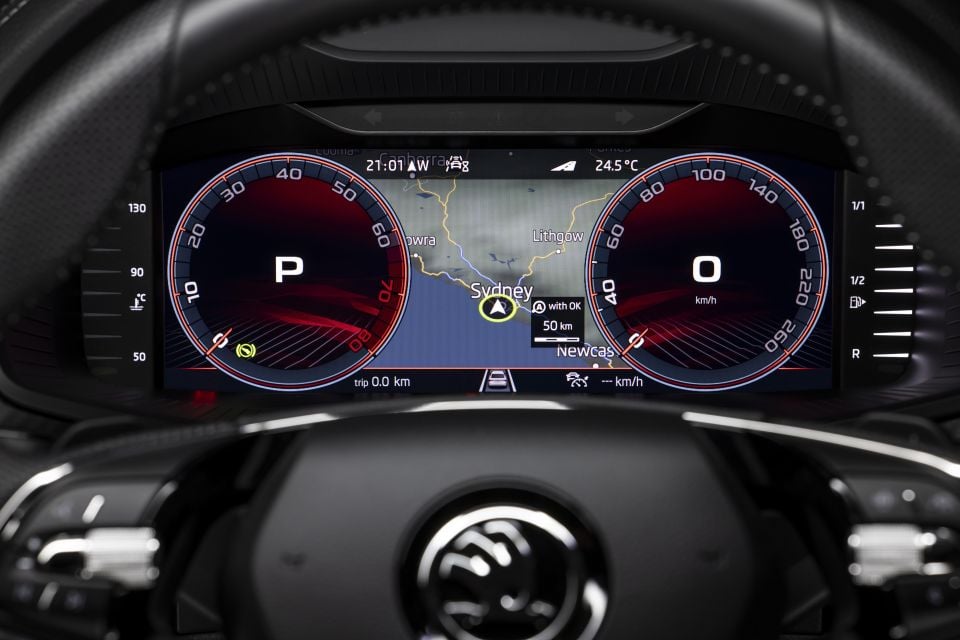
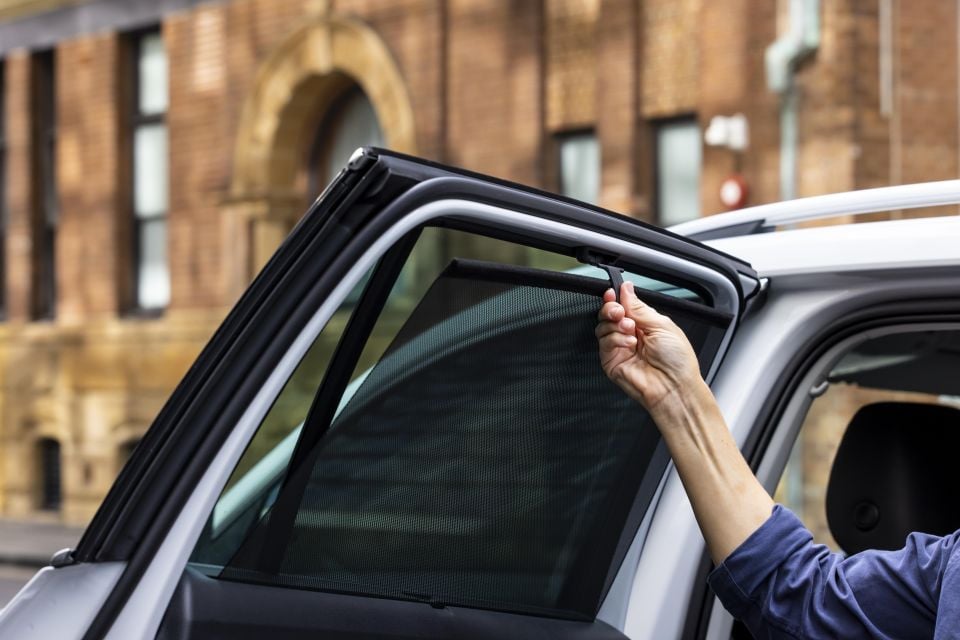
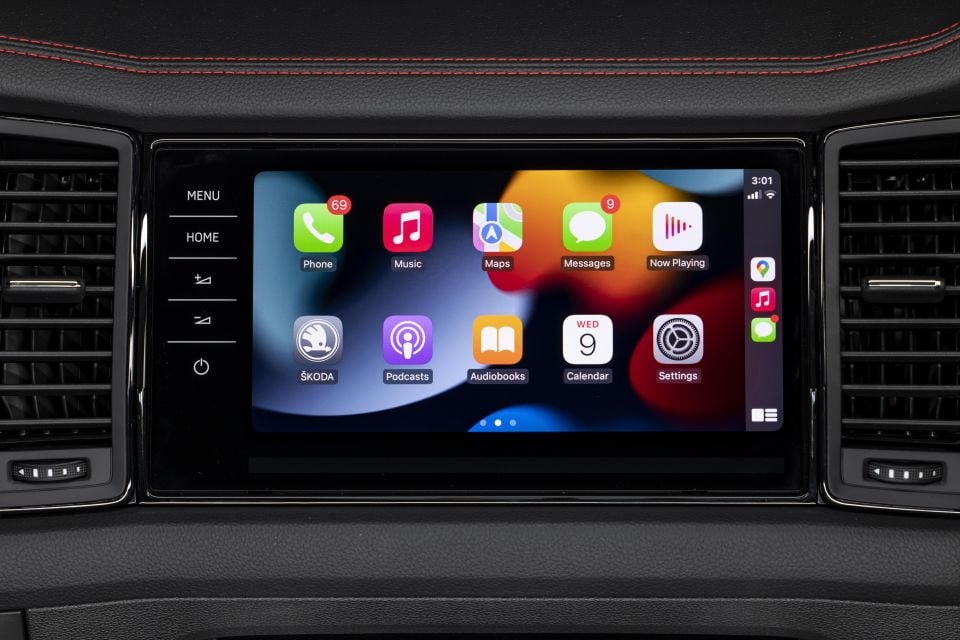
Buy your new car without the stress. It's fast, simple and completely free.

Great service from Travis and team, second time I have used this business would not hesitate to recommend them to anyone
Craig C.
Purchased a Ford Ranger in Sunshine Coast, QLD
CarExpert helped Craig save $7,224 on his Ford Ranger, now let us save you on your next new car.
Get your BEST priceNote, due to semiconductor shortages, certain shipments of Kodiaqs are coming with slight spec variations with compensation, as detailed here. It’s a constantly changing situation so be sure to double-check everything with the dealer.
The following spec breakdown comes direct from Skoda Australia.
Kodiaq Style highlights:
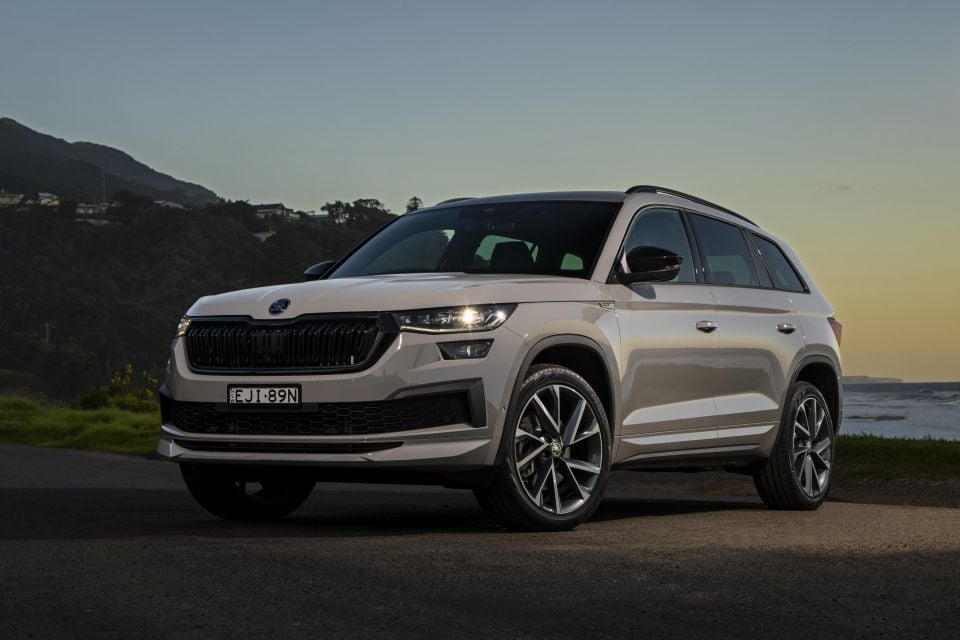
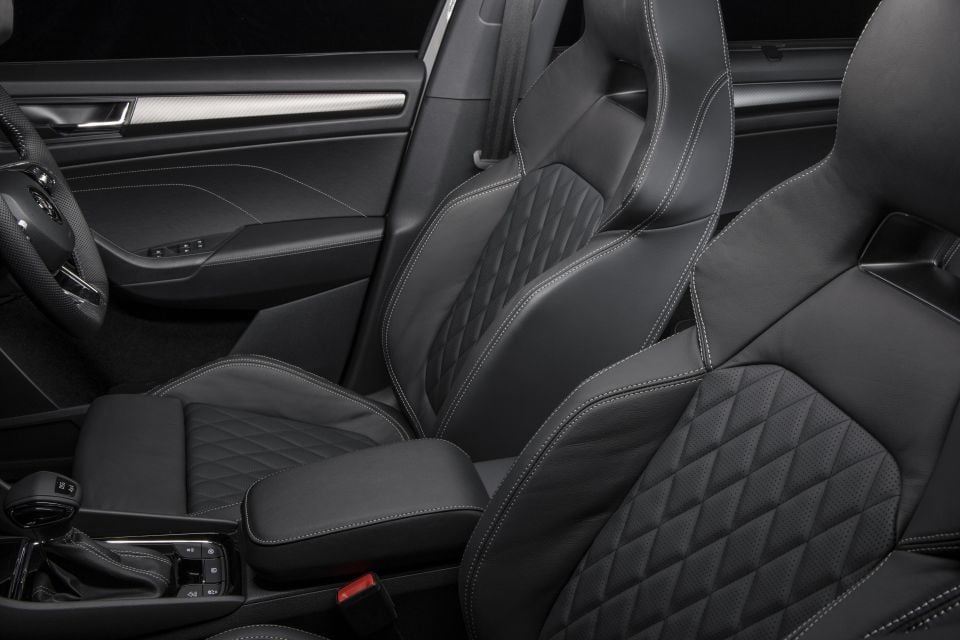
Kodiaq Sportline extras:

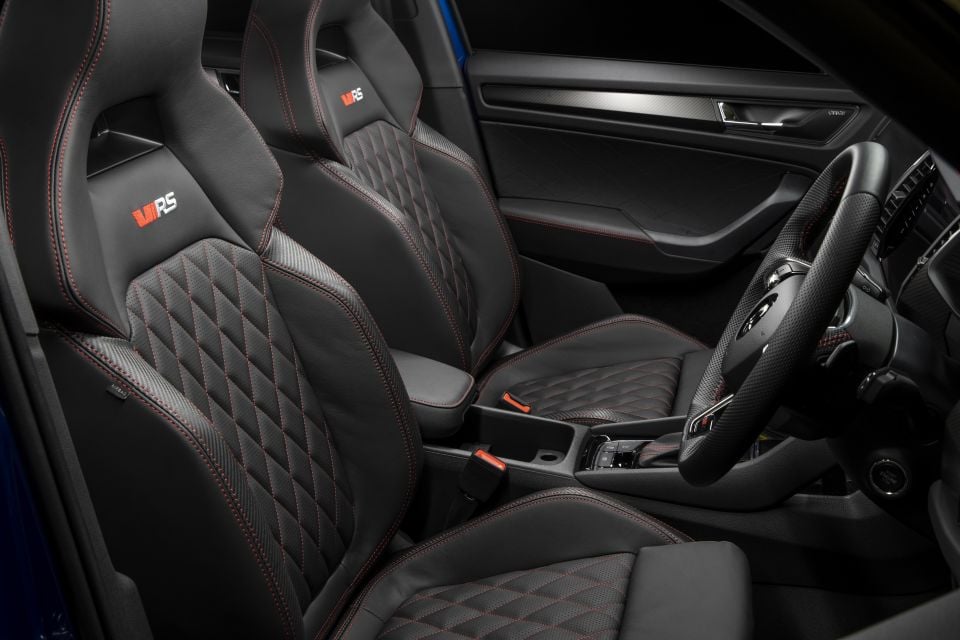
Kodiaq RS adds:
There are also plenty of optional extras, some of which are standalone and some of which come in packages. We expect a majority of vehicles imported here to come with one or more packages, as per the fleet we sampled at the national launch.
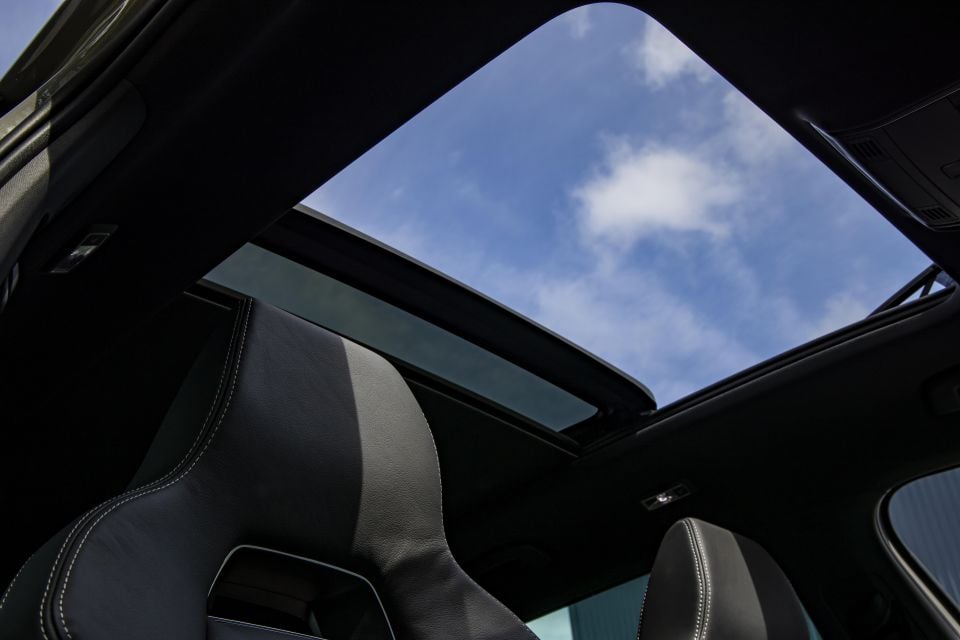
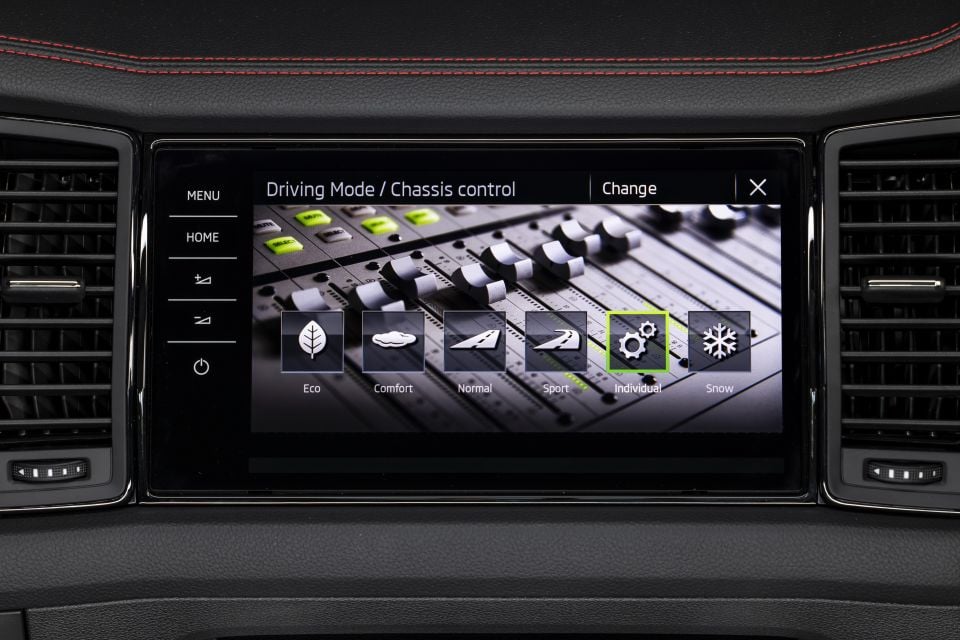
Tech Pack ($3000 on Style, $2900 on Sportline)
Luxury Pack ($6500 on Style, $3700 on Sportline)
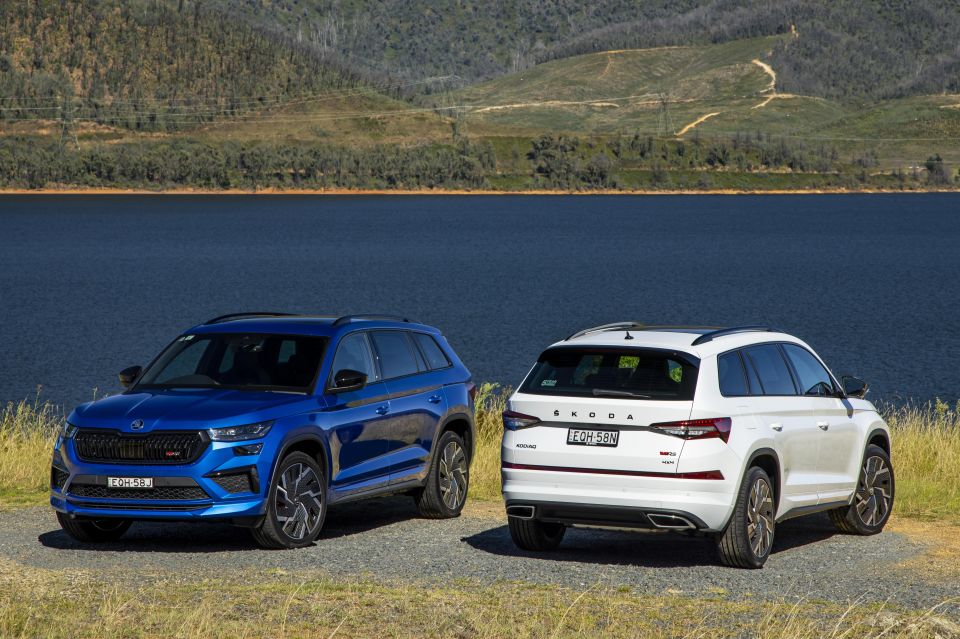
The following standalone options are available:
Finally, colours:
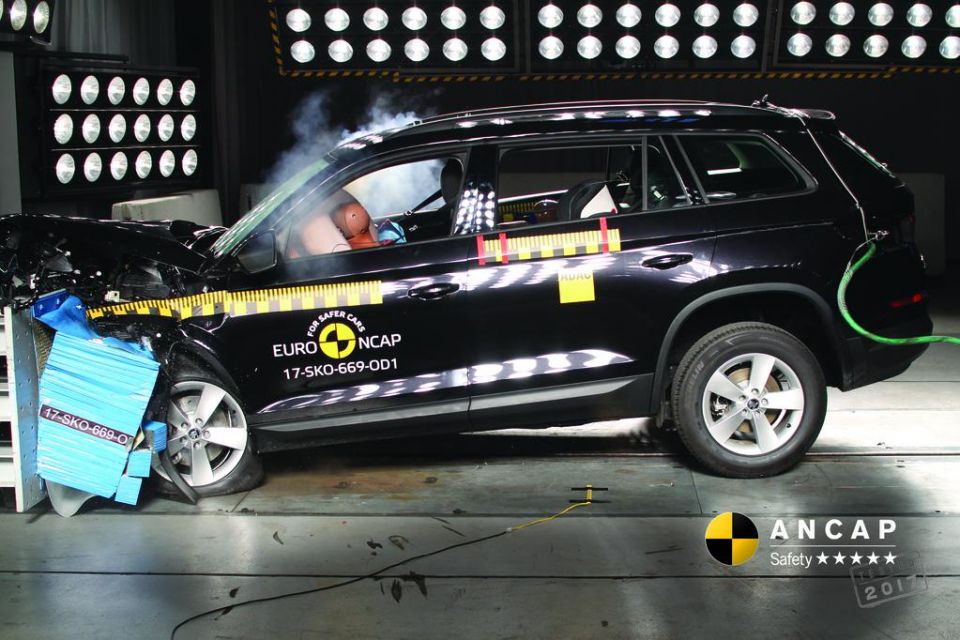
The Kodiaq has a five-star ANCAP rating with a 2017 datestamp.
It received an adult occupant protection score of 92 per cent, a child occupant protection score of 77 per cent, a pedestrian protection score of 62 per cent and a safety assist score of 54 per cent.
Standard safety features include:
As mentioned above, the Style and Sportline only get other features such as lane-keep assist, blind-spot monitoring, rear cross-traffic alert, and both travel and emergency assists as part of options packages. This is a negative considering we expect to see these features on all vehicles at this price point as standard.
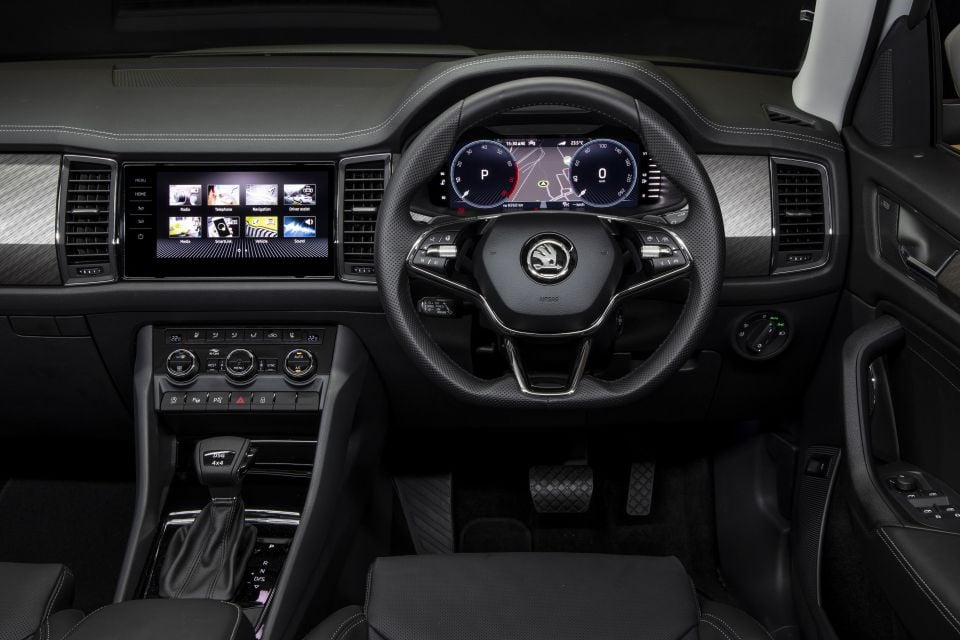
While the colours, seats, trim patterns and stitching are all different by grade, fundamentally the interiors of all Kodiaqs are similar. The update for 2022 has just modernised what remains a clever and easy-to-use space.
Well-made too, with hard-wearing materials and touchpoints, and what felt like rock-solid build quality free from squeaks and rattles. There’s a little too much dreaded glossy piano black trim but it’s not the worst offender here.
The comfortable driver’s seats are supportive and have plenty of adjustments, while the new-design steering wheel with rolling dials and buttons (rather than fiddly VW-style trackpads) is nice to hold and simple to operate.
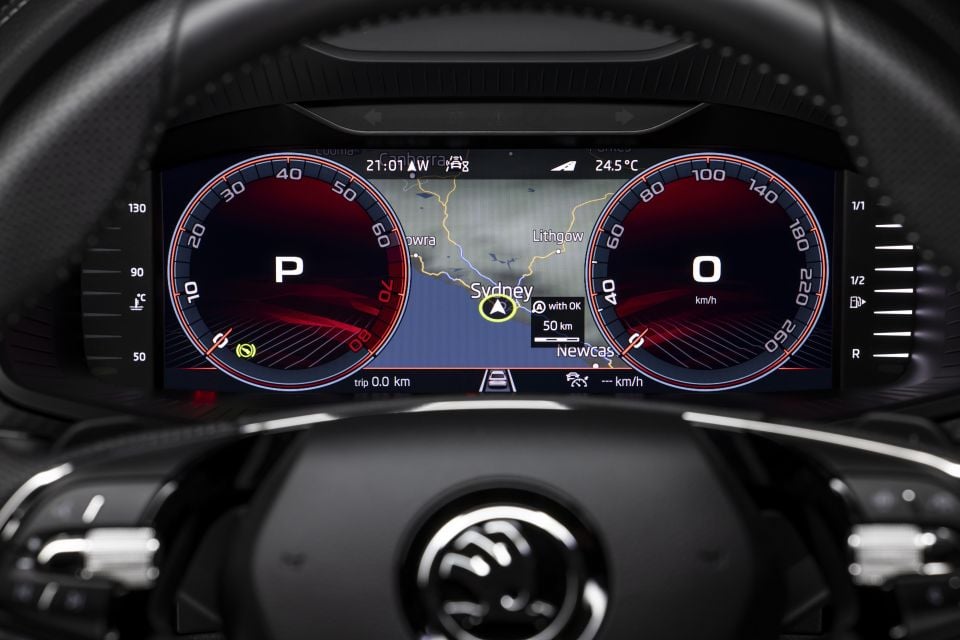
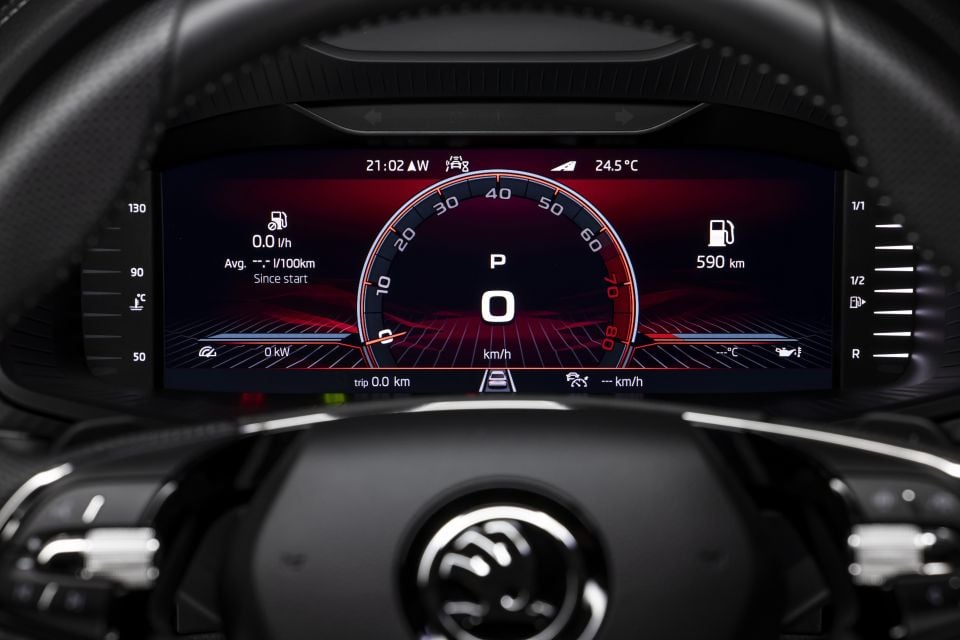
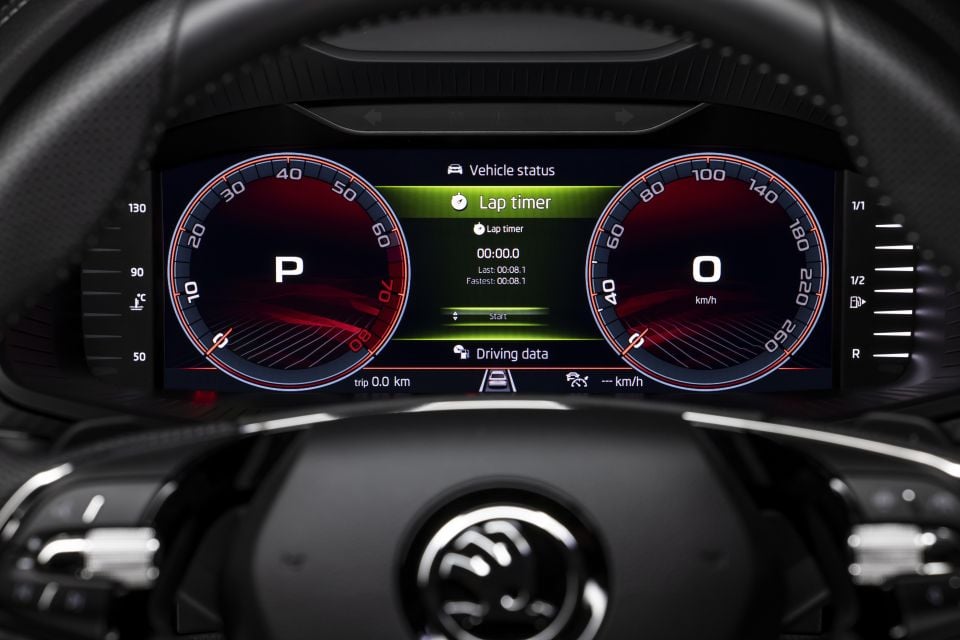
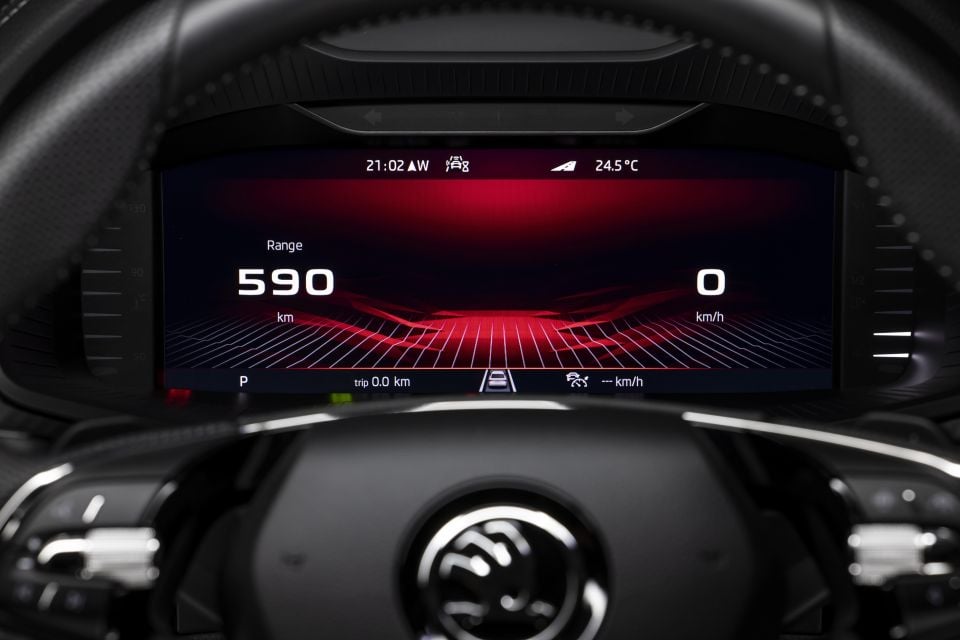
Even with a panoramic sunroof my 194cm frame had plenty of front headroom, which again is not something all SUVs in this segment offer.
The digitised instrument cluster has improved graphics and slick processing, with various colours and display modes to cycle through. My two picks were a full-size map view and a centralised speedo view with trip data and remaining range as bookends.
The 9.2-inch centre display is not as big as the latest Hyundai-Kia systems but on the plus side it has bright and brash graphics, dead simple menu icons, and excellent processing power that means it loads, re-pairs and responds quickly.
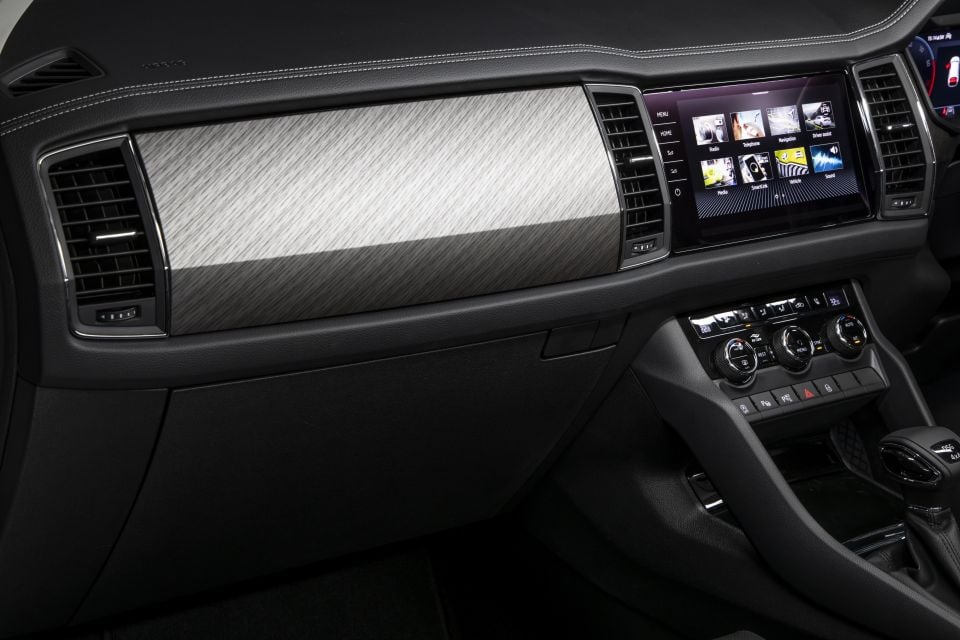
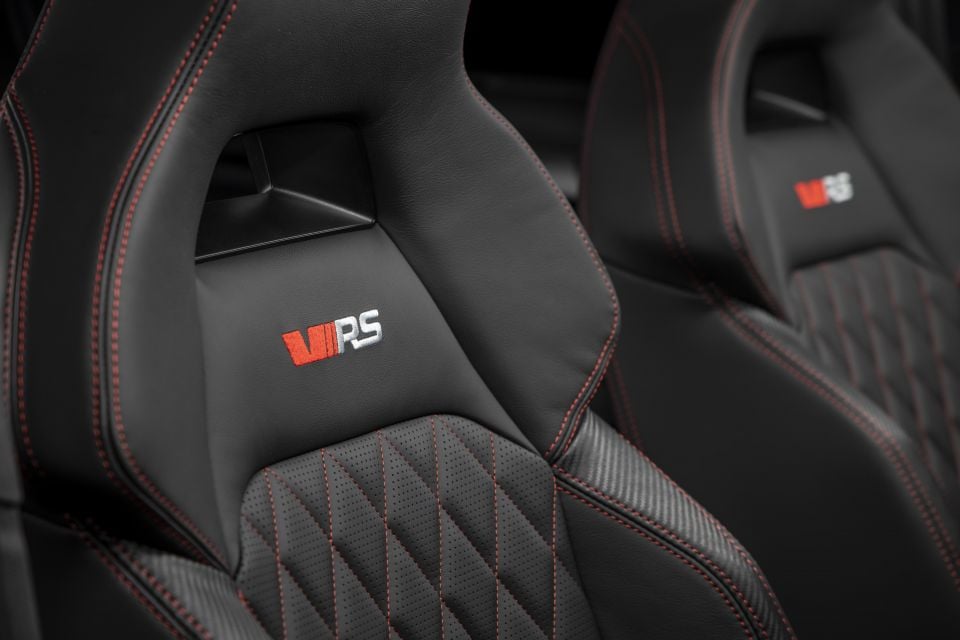
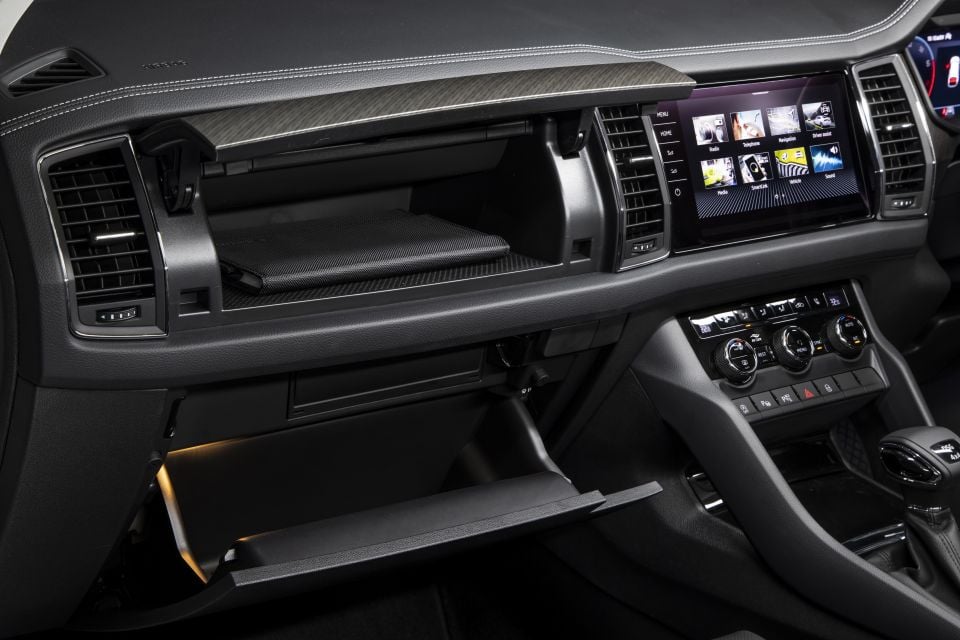
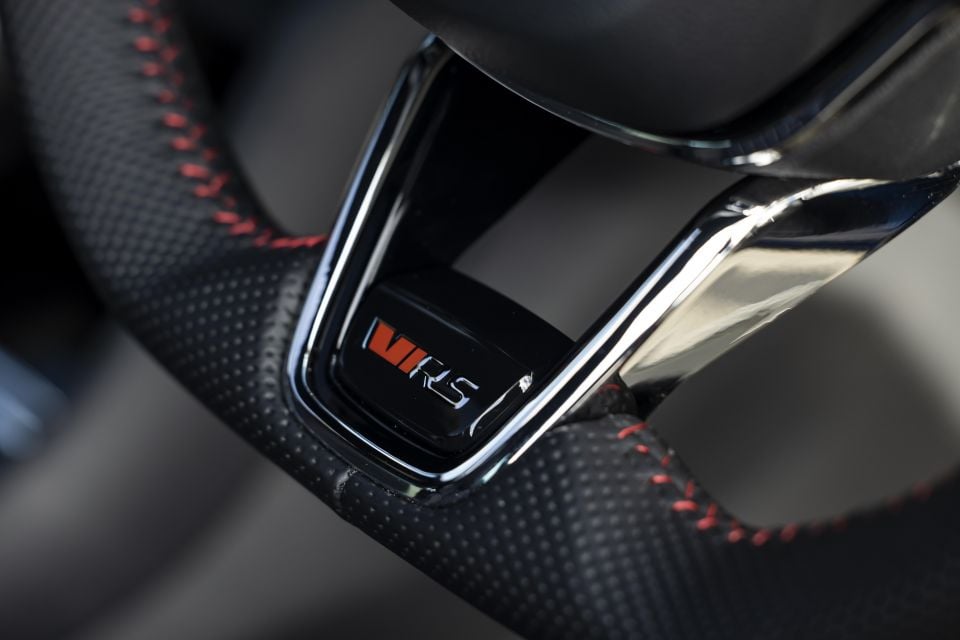
The standard wireless charge pad and wireless phone mirroring also operated seamlessly in our various test cars, meaning I’d just leave my iPhone in my pocket and have CarPlay operational by the time I was belted up.
Below the screen sits a collection of ventilation dials and buttons, and a series of controls for door locks, camera display, stop/start, and parking assist. Again, simplicity in action.
Storage options include a large open cubby between the seats with a height- and reach-adjustable armrest cover, bottle-friendly fabric-lined door bins, a phone storage area under the fascia, and two stacked lidded gloveboxes.
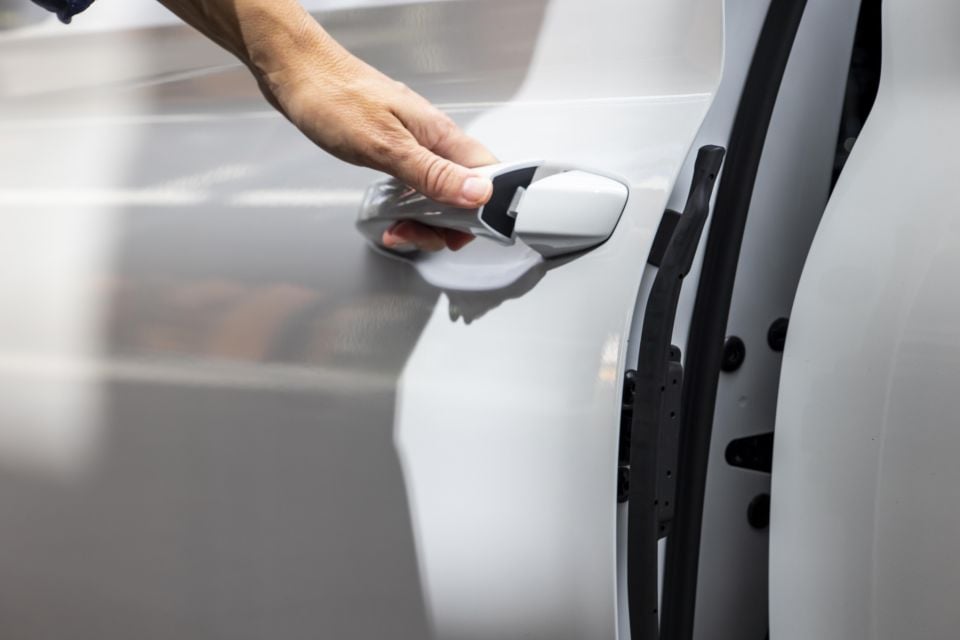
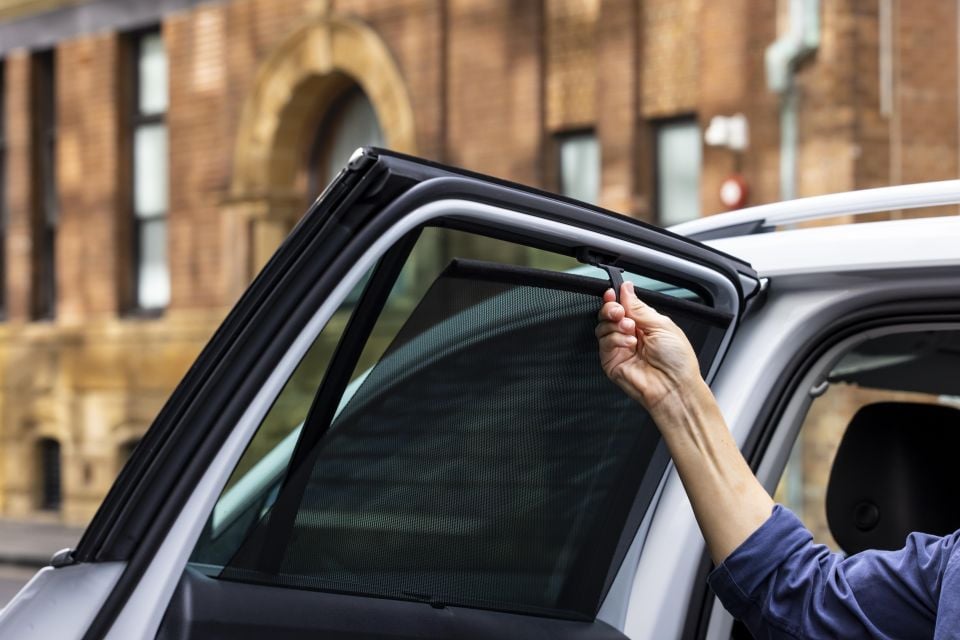
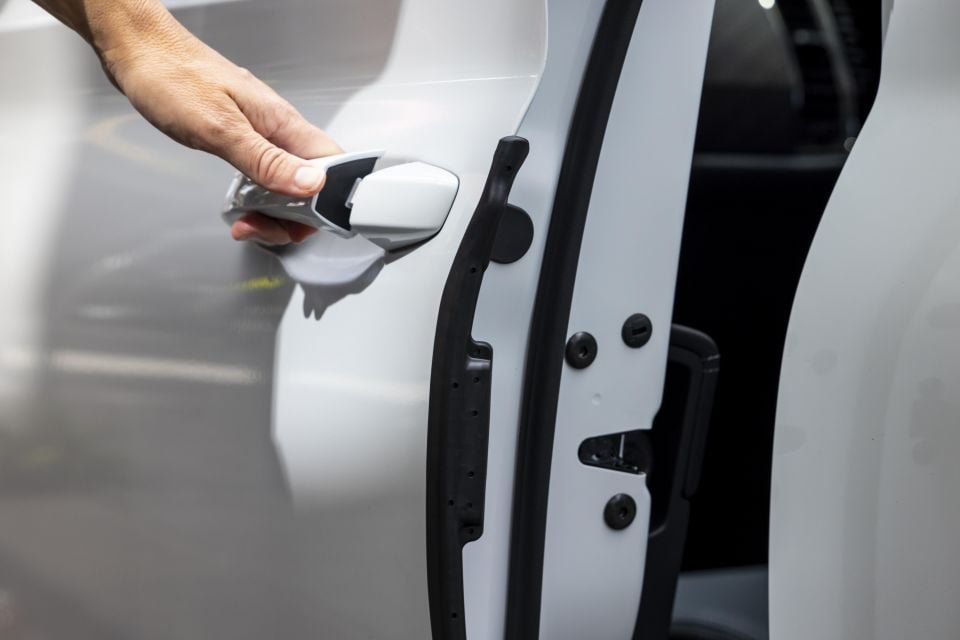
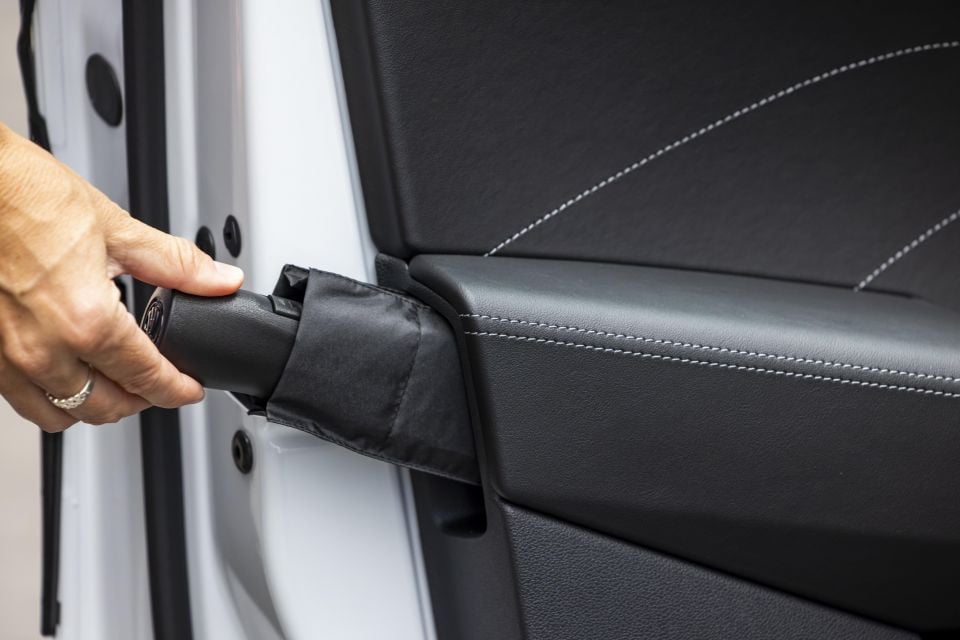
The doors have a super-clever spring-loaded plastic device that pops out when you enter, protecting the metal door edge and reducing any damage you’ll inflict should you or an over-eager occupant open their door into a neighbouring vehicle etc.
Being a Skoda, there are umbrellas in the doors, while the back windows also come with pull-up sun-blinds that retract back into the doors. It’s these small touches for which the company is renowned.
Other back-seat amenities include felt-lined bins, rear vents, and cup holders – but oddly no USBs, just a 12V ready for an aftermarket adaptor. The Style comes with nifty tablet holders, but the higher grades with their swish one-piece seats do not.
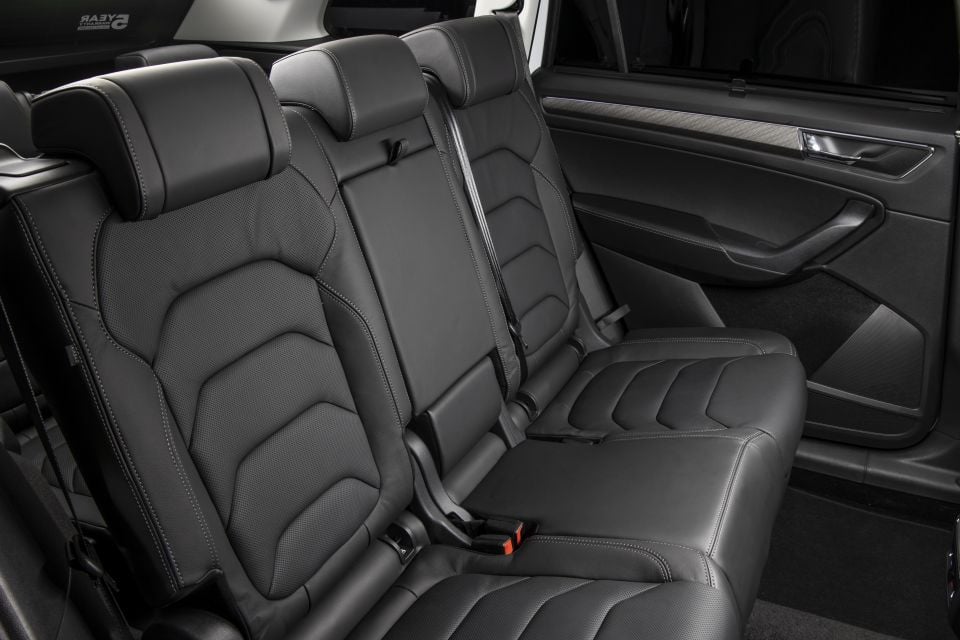
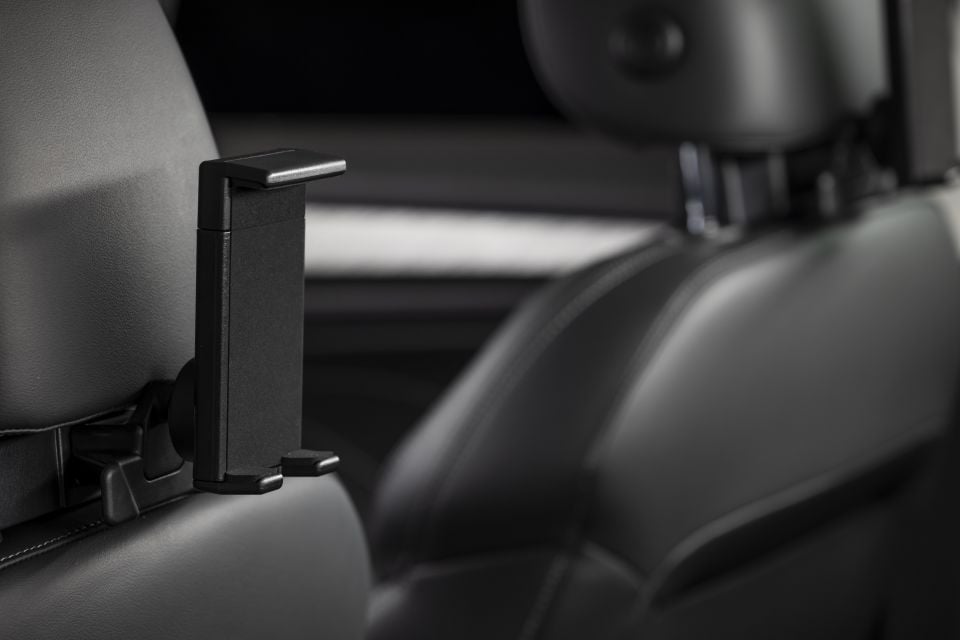
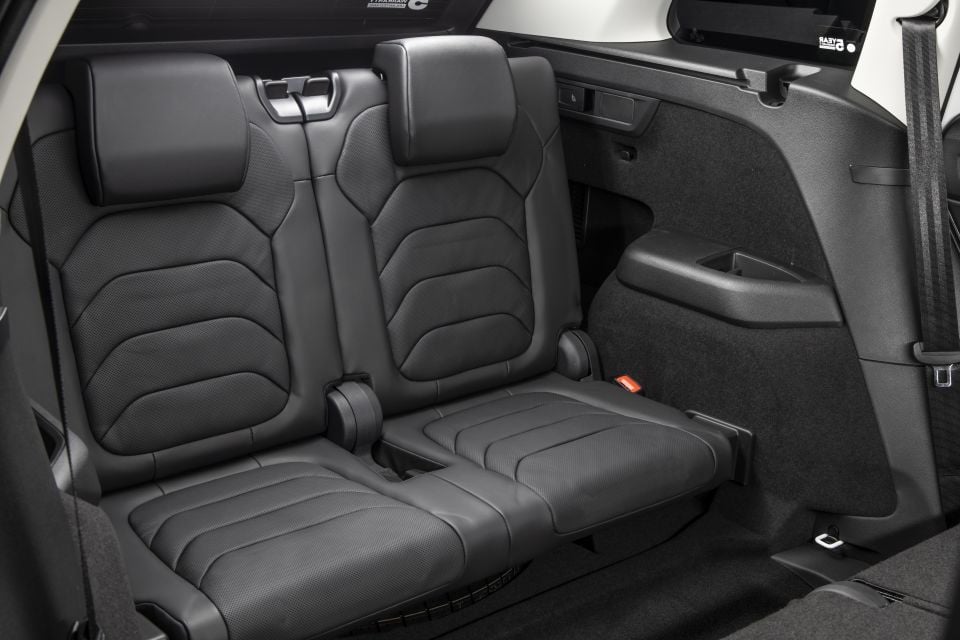
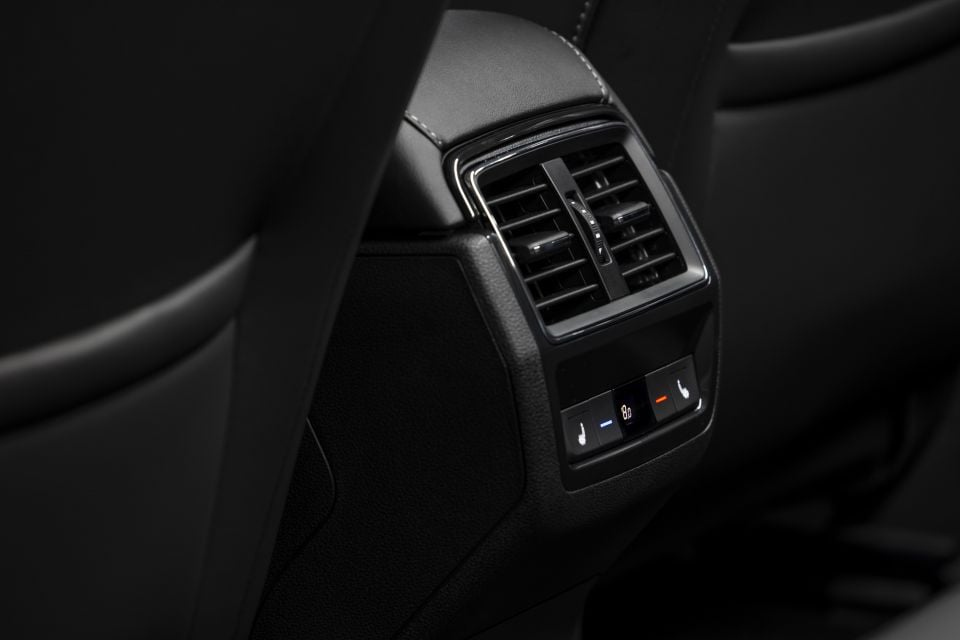
Where expert car reviews meet expert car buying – CarExpert gives you trusted advice, personalised service and real savings on your next new car.
Middle-row space proved sufficient for my frame behind my preferred driving position, so it’d have a surplus of space for kids, and said bench both slides and reclines.
Access to the standard third row of seats from the kerbside comes through pulling a clip atop the left-hand side seatback, which tilts and slides the larger split portion.
The separately folding rearmost seats benefit from airbag coverage, but are really best for kids and occasional use. This is more of a ‘5+2’ than a permanent seven-seater.
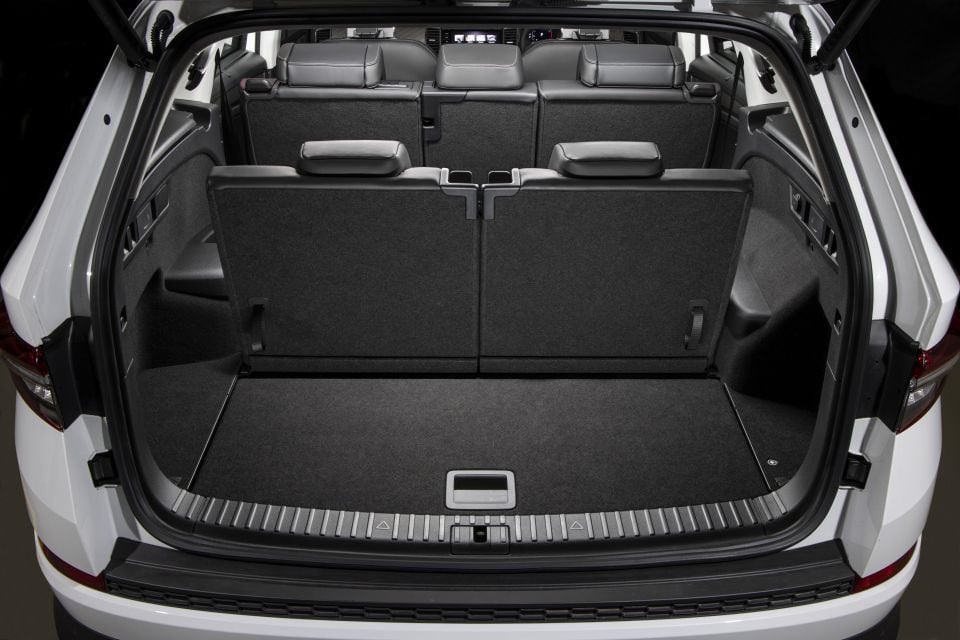
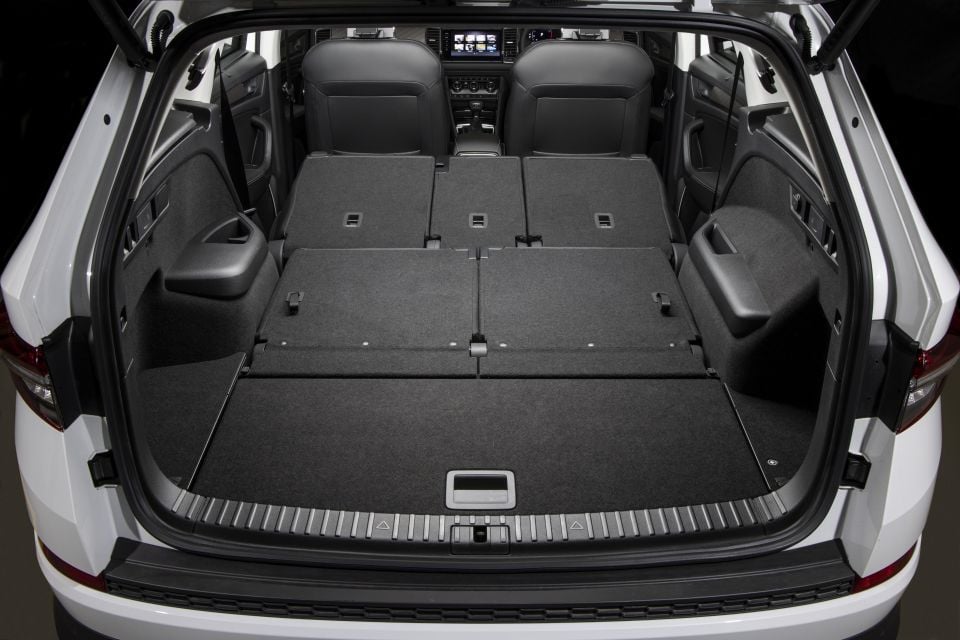
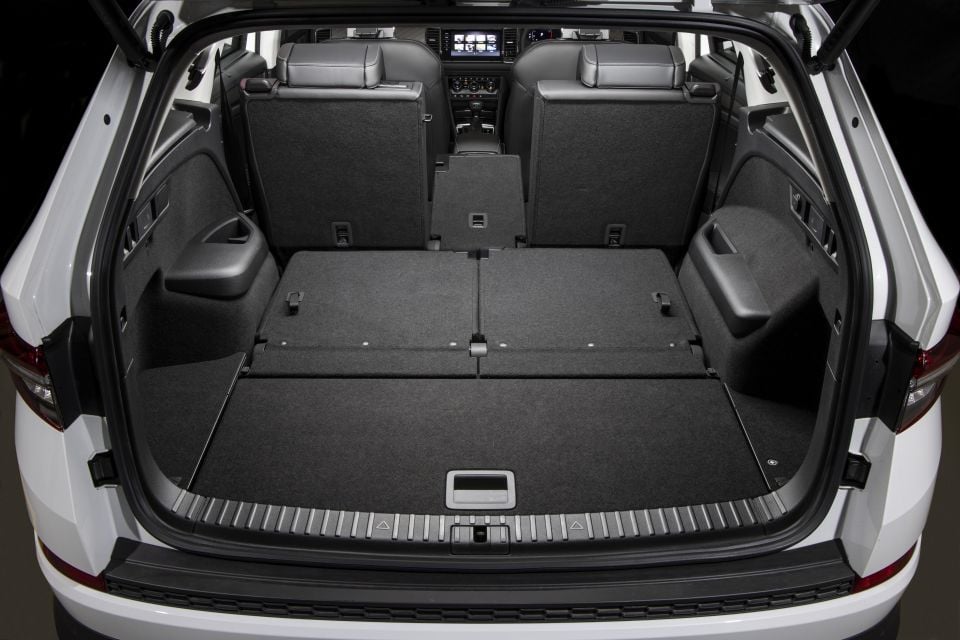
This is forgivable when you consider how relatively small the Kodiaq is: at 4697mm long it’s 113mm shorter than a Kia Sorento and 269mm shorter than a Toyota Kluger. Yet its headroom and legroom in five-seater mode is at least a match, and in some ways superior.
As the gallery embed shows, the third row of seats folds neatly into the floor when not in use, taking boot space from 270L to 765L. Levers flip down the second row seats, taking capacity to more than two cubic-metres, or 2005L.
Nifty features in the boot include a spot under the loading floor for a retractable cargo blind connected by a rigid pole and a temporary-only spare wheel (no full-size spare unfortunately), cargo netting, rear bag hooks, and velcro-backed plastic bits that act as bag-brackets.
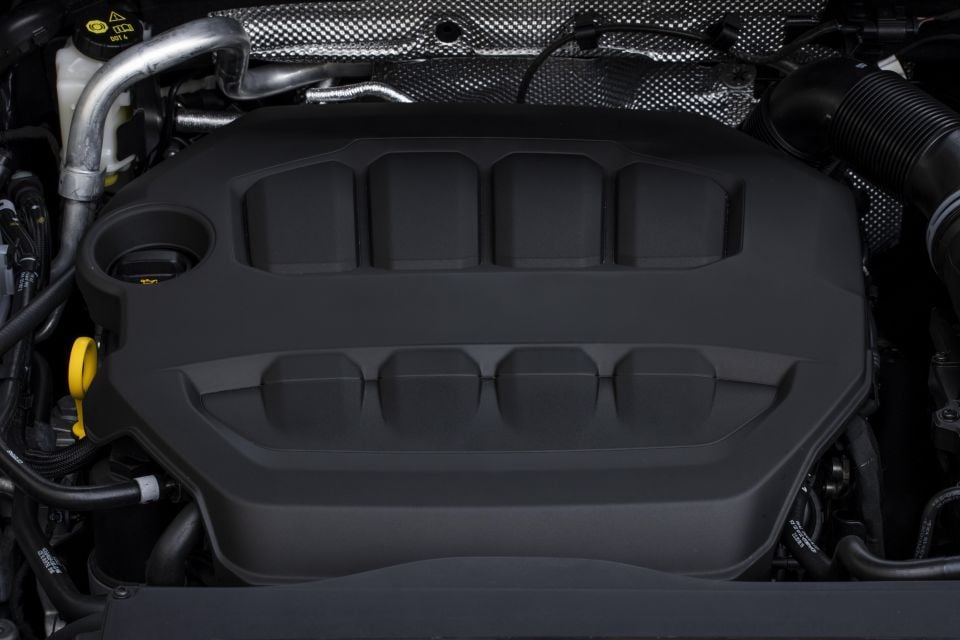
The Kodiaq Style and Sportline both use a familiar 2.0-litre turbocharged petrol engine making 132kW of power (3900 to 6000rpm), and 320Nm of torque (1400 to 3940rpm).
The official zero to 100km/h time is a relatively brisk 8.4 seconds, coupled with combined fuel consumption of 8.2 litres per 100km on the ADR cycle, running 95 RON premium fuel. In a market where big V6 petrol engines are common, it’s quite efficient.
The RS meanwhile uses the Octavia RS’s (and Golf GTI’s) 2.0-litre turbo-petrol taking power up to 180kW and torque to 370Nm (between 1600 and 4300rpm).
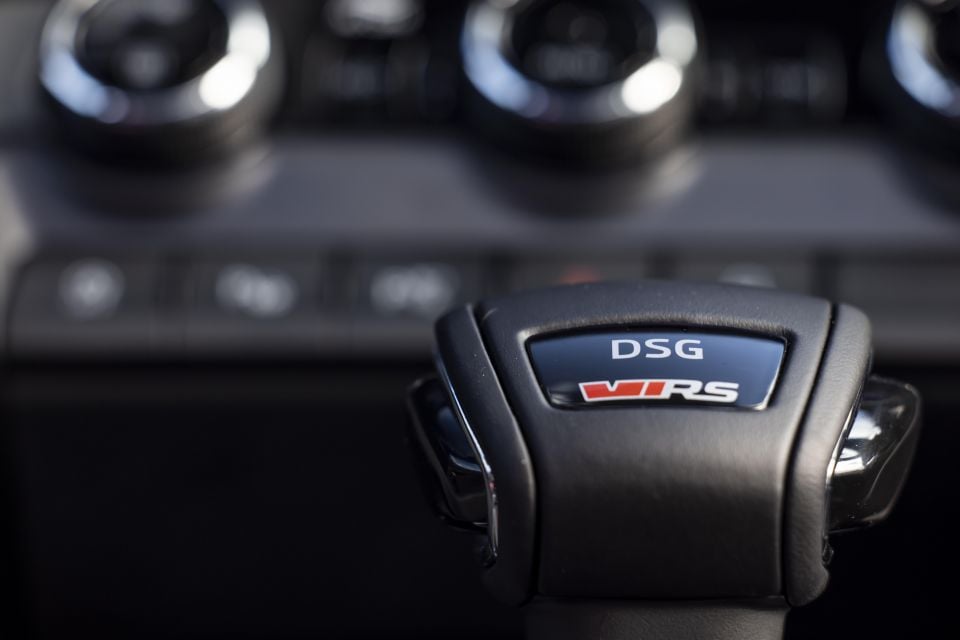
The official zero to 100km/h time is 6.6 seconds, coupled with combined fuel consumption of 7.5 litres per 100km on the ADR cycle, running 95 RON premium fuel – lower than the 132TSI presumably in part because it doesn’t have to work as hard.
Both engines are mated to standard variable all-wheel drive rather than coming in entry front-drive guise, and both use a seven-speed DSG dual-clutch automatic – the RS with paddle shifters and manual mode. All three grades are rated to tow 2000kg.
It’s worth mentioning here that the pre-facelifted Kodiaq RS came instead with a 2.0-litre twin-turbo diesel engine with 176kW and a meatier 500Nm of torque, with a slower 7.0-second 0-100km/h time but superior 6.2L/100km ADR fuel economy. For those after an effortless diesel character, it’ll no doubt be missed.
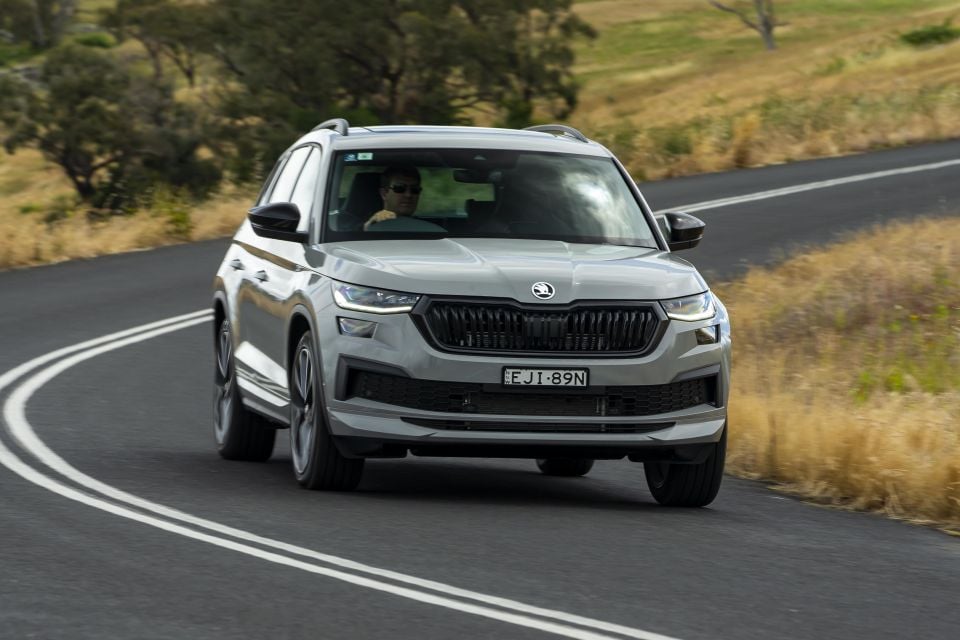
While the entry 2.0-litre turbocharged petrol engine with 132kW doesn’t appear all that powerful, its meaty 320Nm torque output from just above idle ensures a more-than-acceptable take-off and acceptable pull for overtaking, with a nice dose of refinement to boot.
While it drinks expensive premium fuel, it’s also fairly efficient, and this application of DSG felt smooth and unfussed. That said, given the smaller Karoq has the 140TSI, it seems strange the inferior engine is used in a larger vehicle.
Of course, the RS’s extra 48kW and 50Nm help, although naturally the Kodiaq’s added size means it’s not quite as punchy as it feels in the Golf GTI.
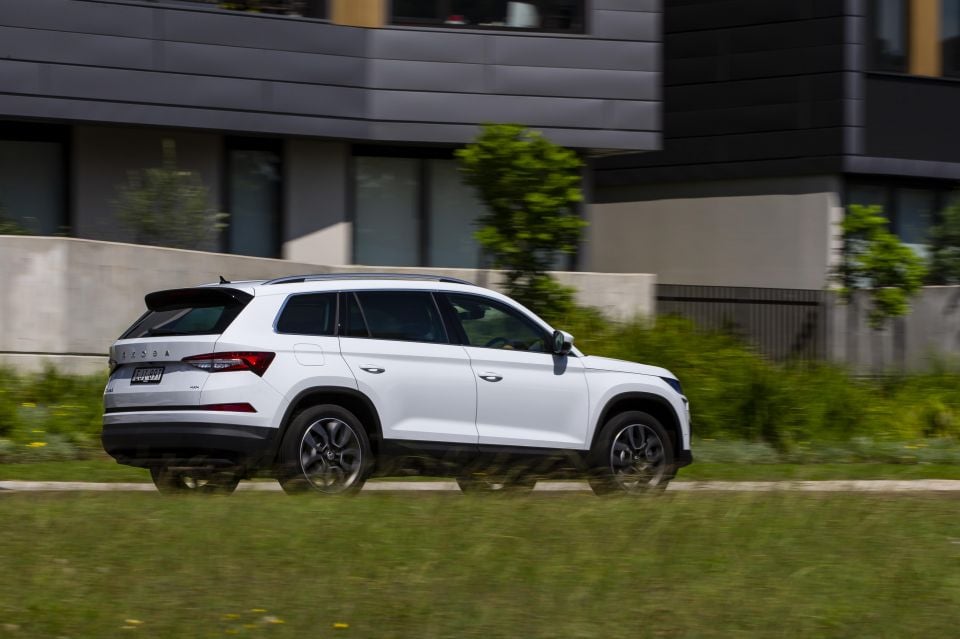
While I did a few runs in the entry model, I drove about 800km in a Kodiaq RS and used an average of 7.4L/100km – meaning I made it all the way home to Melbourne from southern Sydney on a tank with 10km indicated range remaining.
The various driving modes aren’t likely to cop too much of a workout, though in Sport the DSG shifts more aggressively, particularly under braking. The only time I really wanted more grunt was pulling up a fairly steep and long winding hill – not because it was slow, but because the ‘RS’ badge hints at more.
While the popularity of diesels has declined, the now-axed 500Nm bi-turbo oil-burner from the old RS was an effortless hauler that some will miss. A bit slower perhaps, but definitely more packed with low-end pulling power.
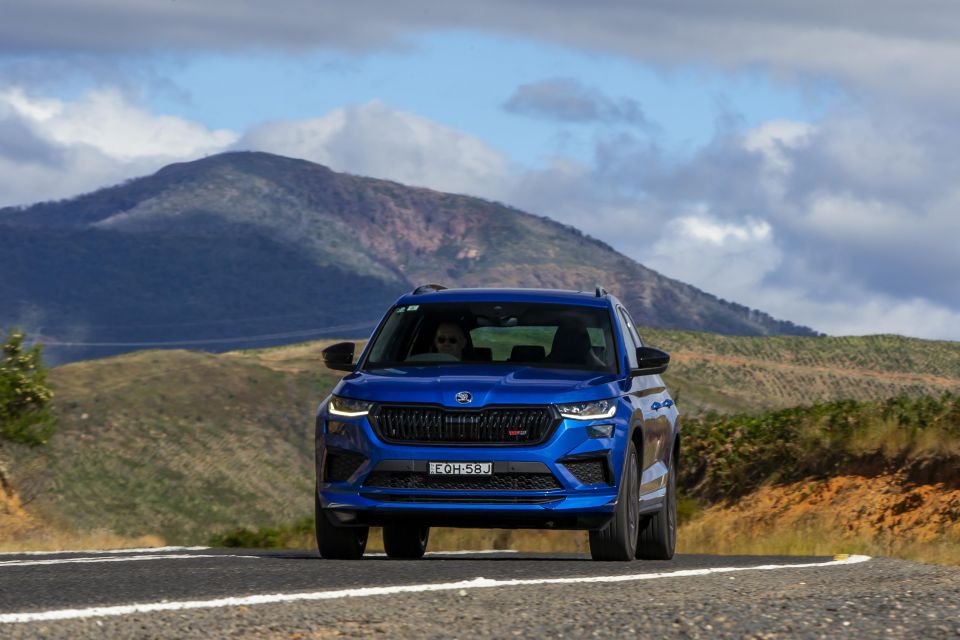
Dynamically the steering is very light and non-resistant unless you put the car into said sporty mode, while the ride quality over patchy and cobbled roads is impacted to some degree by the large standard wheels on low-profile tyres. It’s never brittle or crashy, just firm.
The Kodiaq feels smaller than its 4.7m length in dynamic driving, with wagon-like body control and quick responses to inputs. It certainly doesn’t handle like a barge, despite being a seven-seater.
The standard adaptive damping system is one of those features that motoring journalists like – making the car feel a little firmer and more stable in corners in dynamic mode and softening up in comfort mode – but without having driven a Kodiaq on passive dampers I cannot honestly tell you how helpful the setup is.
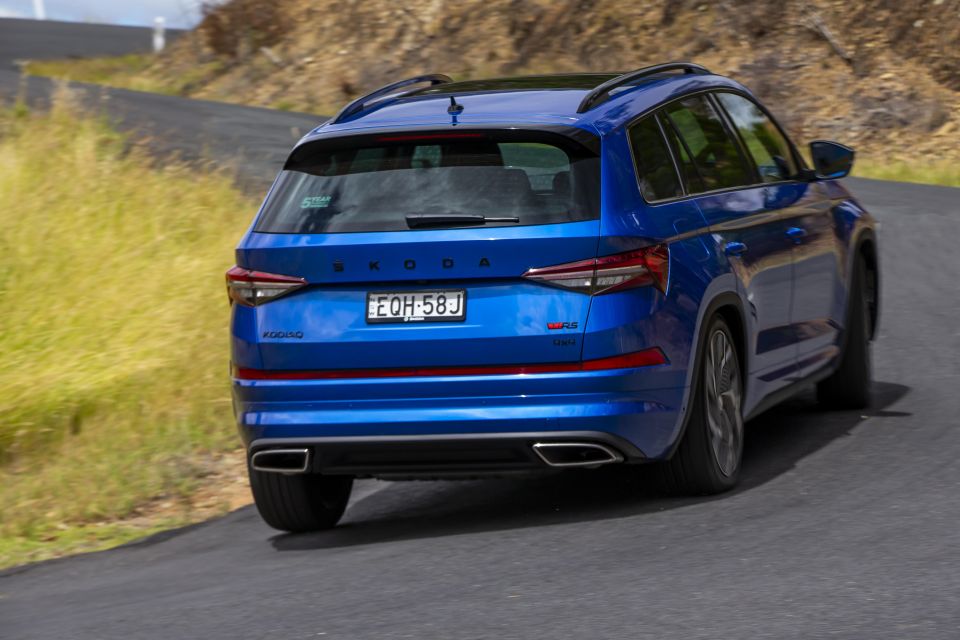
What I can say is my eight-ish hour commute home in the RS on 20-inch wheels was a relatively serene and comfortable one, and that my back felt fine the next day.
The driver-assist suite’s Travel Assist mode that pairs the active lane-keeping aid with the active cruise control, and is able to slow the car down if you ignore prompts to take over steering after a few seconds, worked almost perfectly.
However, the fact that this function, as well as blind-spot detection, costs extra in all bar the RS is simply not good enough, period.

All Skodas come with a five-year, unlimited kilometre warranty and roadside assist that’s renewed at each dealer service.
You can buy various pre-paid servicing plans to keep the pricing down, and Skoda is keen to talk about how its cars are actually reasonably affordable to maintain despite being European.
Service intervals are 12 months and 15,000km, and cost $1800 (Style and Sportline) or $2000 (RS) for five visits, or $2700/$2900 for seven.

However, as is common, these service packs only cover standard scheduled services and not engine oil top-ups, brake pads and discs, batteries, wiper blades, and wheel balancing or alignment.
Skoda Australia also sells maintenance subscription plans with prices calculated using your typical mileage. You can buy these plans to only cover servicing essentials, or a complete plan that packages all running costs (bar petrol) into a single monthly payment.
If I listed all the pricing breakdowns here it would take an eternity, but for context a Complete Plan costs $59.50 per month for the first three years and $118 per month after that.
All told, Skoda is to be commended for offering a good amount of clarity and ease-of-use around dealer servicing.
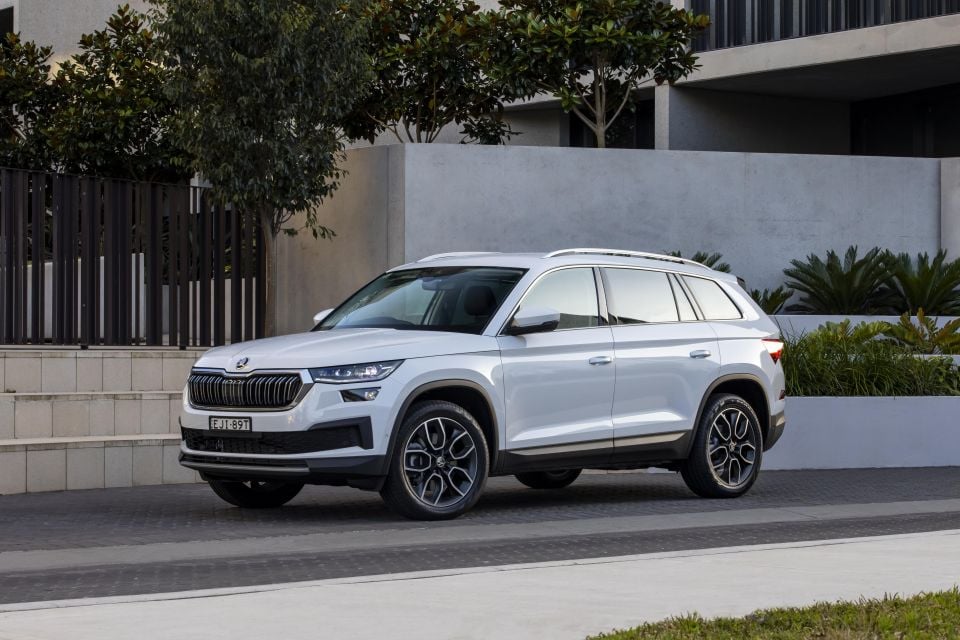
The 2022 Kodiaq update does just enough to keep one of our favourite three-row SUVs contemporary.
While it leans on options a bit more than we’d like, lacks the old 500Nm diesel and packs a smallish third-row, it remains a premium-feeling, cleverly engineered, well-made, and good-to-drive European family bus at an attainable price.
It may not have the greatest badge recognition, but the Skoda should be on your shortlist.
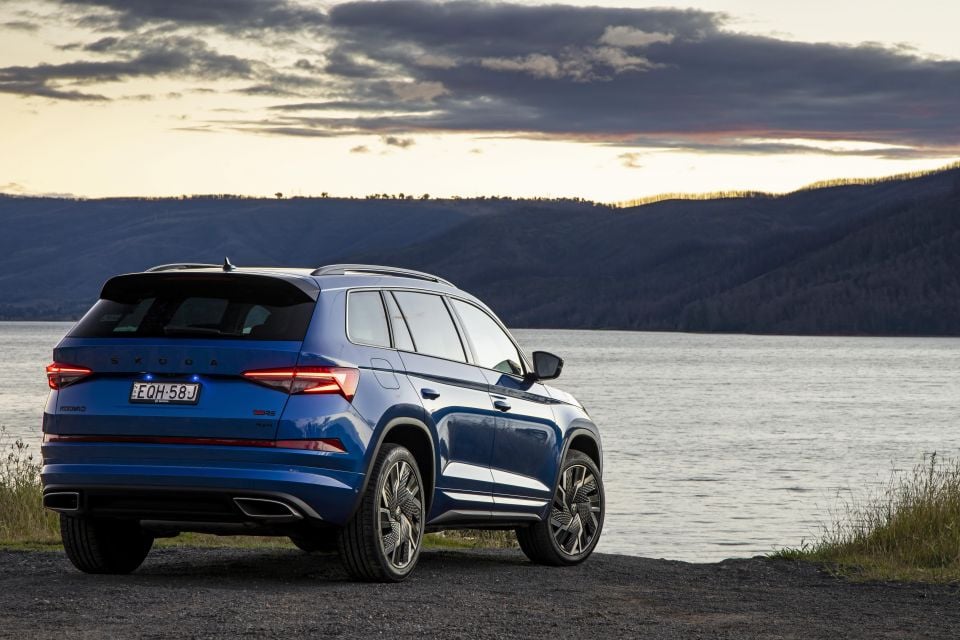
Click the images for the full gallery
MORE: Everything Skoda Kodiaq
Where expert car reviews meet expert car buying – CarExpert gives you trusted advice, personalised service and real savings on your next new car.


William Stopford
54 Minutes Ago
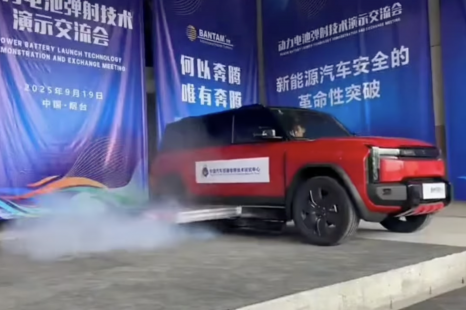

CarExpert.com.au
54 Minutes Ago
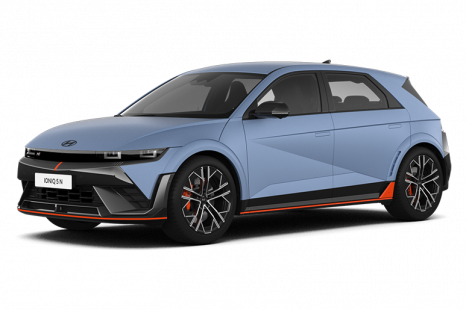

Damion Smy
2 Hours Ago
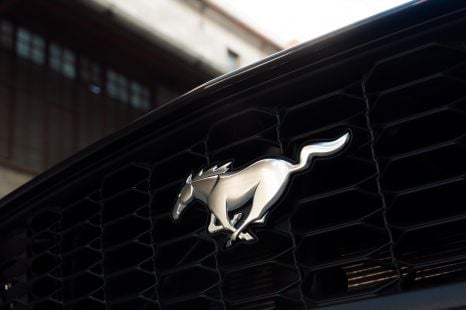

Damion Smy
3 Hours Ago
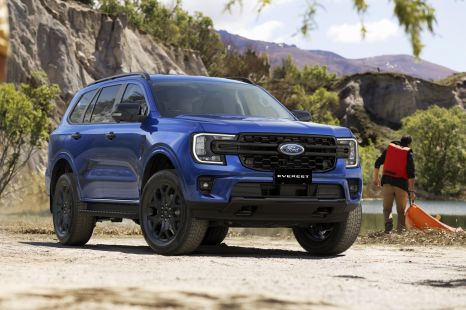

William Stopford
3 Hours Ago
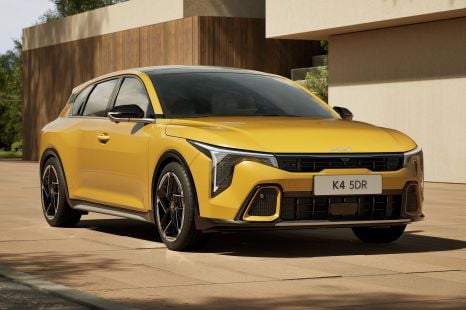

James Wong
3 Hours Ago